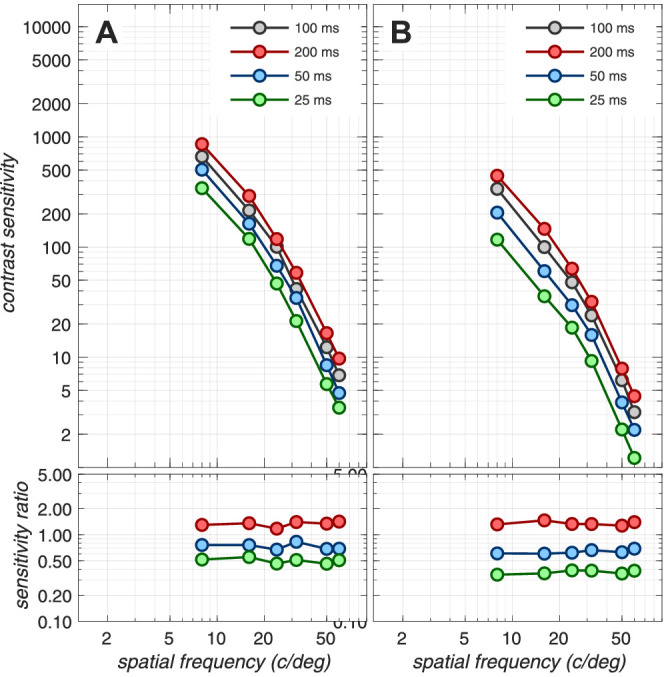Figure A.5.

Impact of stimulus duration. Contrast sensitivity functions computed for different stimulus durations, at the level of cone photopigment excitations (left) and cone photocurrents (right). These CSFs were computed for a 3 mm pupil, typical subject wavefront-based optics, eccentricity-based cone mosaics, and in the absence of eye movements using the SVM-Template-Linear computational observer. The reference CSF (gray disks) is computed for 100 ms, the duration used in all computations in this paper. Note that at the level of cone photopigment excitations, ratios of CSFs with respect to the reference CSF (100 ms) cluster around for 200 ms, for 50 ms, and for 25 ms, as expected from the square root law of Poisson noise limited sensitivity. At the level of cone photocurrents, where noise is additive and sensitivity is regulated by the phototransduction dynamics, there is a more dramatic effect of stimulus duration on performance.
